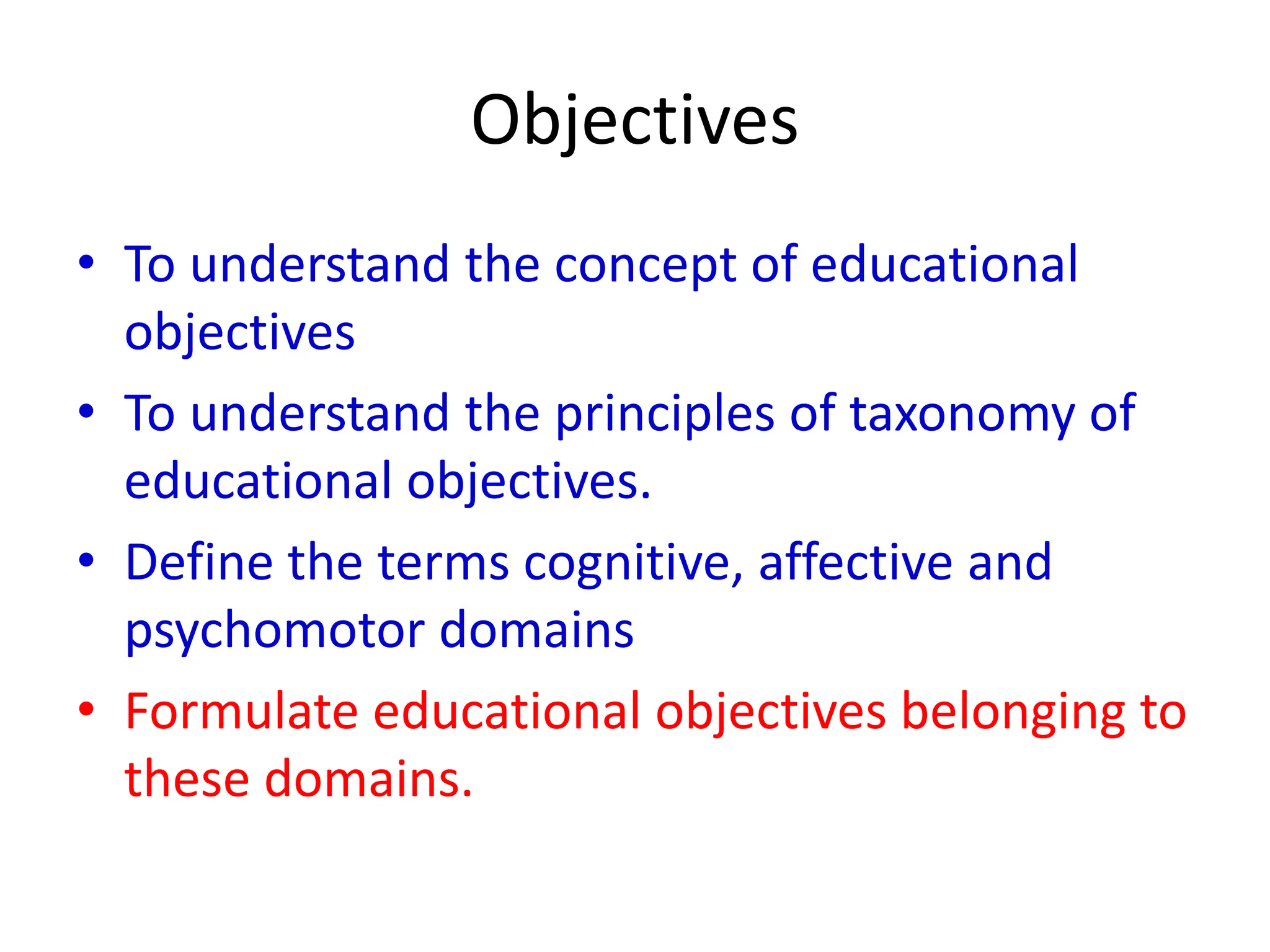This document provides an introduction to Bloom's taxonomy of educational objectives. It discusses the three domains of cognitive, affective, and psychomotor objectives. The cognitive domain is broken down into six categories ranging from simple recall to evaluation and synthesis. The affective domain ranges from awareness to characterization by a value. The psychomotor domain progresses from imitation to complex skills. Educational objectives should be formulated according to these taxonomies to ensure learning goals are properly structured from basic to advanced. The document also discusses how educational objectives guide both teaching and learning.


























































